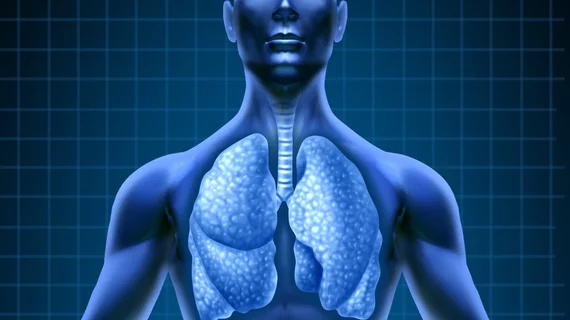Radiologists can safely revise post-procedural approach to CT-guided lung biopsies
Radiologists can safely shorten post-procedural observation time and eliminate X-ray follow-up in many patients who’ve undergone CT-guided lung procedures, experts reported April 24 in JACR.
Typically, individuals are monitored after transthoracic lung biopsies due to potential complications, most notably pneumothorax, which occurs in 8% to 61% of cases, they explained Saturday.
But the researchers only reported one such case during observation periods at their institution. And that patient showed symptoms less than one hour after their procedure, meaning they would have undergone follow-up imaging anyway.
The Beth Israel Deaconess radiologists believe their revised protocol can help serve as a general guide to practitioners performing CT-guided lung biopsies.
“This study demonstrates that a shortened observation period of two hours in asymptomatic patients without evidence of pneumothorax on the immediate post-procedural CT after transthoracic procedures, without obtaining a CXR, is safe,” Kenny Chia Ah-Lan, MD, and colleagues with the Boston-based organization explained in the study.
Ah-Lan et al. noted it’s very rare, at least at their institution, to detect new pneumothorax on X-rays performed during post-biopsy observation in asymptomatic patients. And while CXR is both low-cost and safe, keeping patients under watch for four hours significantly drains radiology nursing resources.
So they developed an algorithm that relies on the absence of pneumothorax during post-procedural CT to more quickly triage patients without additional follow-up imaging. For the study, they included 409 patients who underwent CT-guided procedures between Jan. 5, 2015, and June 19, 2017.
The team found 2.2% of patients were diagnosed with delayed pneumothorax 2-10 days after their procedure and observation window. A longer hospital stay would not have been useful, they noted, given patients were asymptomatic at the time and a chest tube would still not have been placed with X-ray findings.
Overall, the Boston radiologists suggest a one hour observation protocol, with two hours to be expected for sedation recovery.
Ensuring patients understand their post-procedural instructions is key to successfully implementing this protocol, the authors noted. And individuals must be able to quickly obtain medical attention if they develop symptoms.
“In conclusion, this single institution retrospective study suggests that it is likely safe to discharge asymptomatic low-risk patients after CT-guided lung biopsies after a short observation time without performing a CXR, provided no pneumothorax is demonstrated on the immediate post-procedural CT,” the researchers concluded.
Read more from the study in the Journal of the American College of Radiology.

